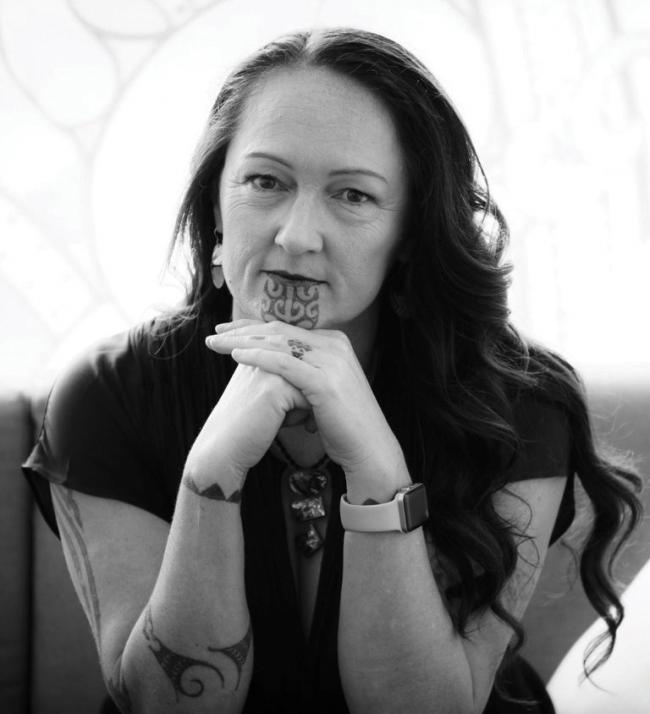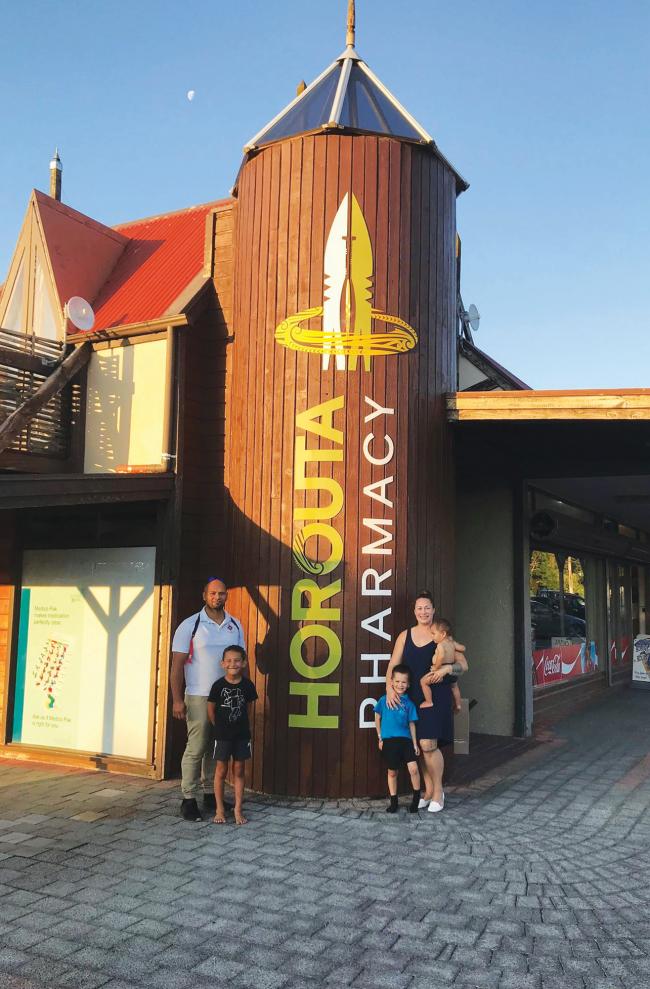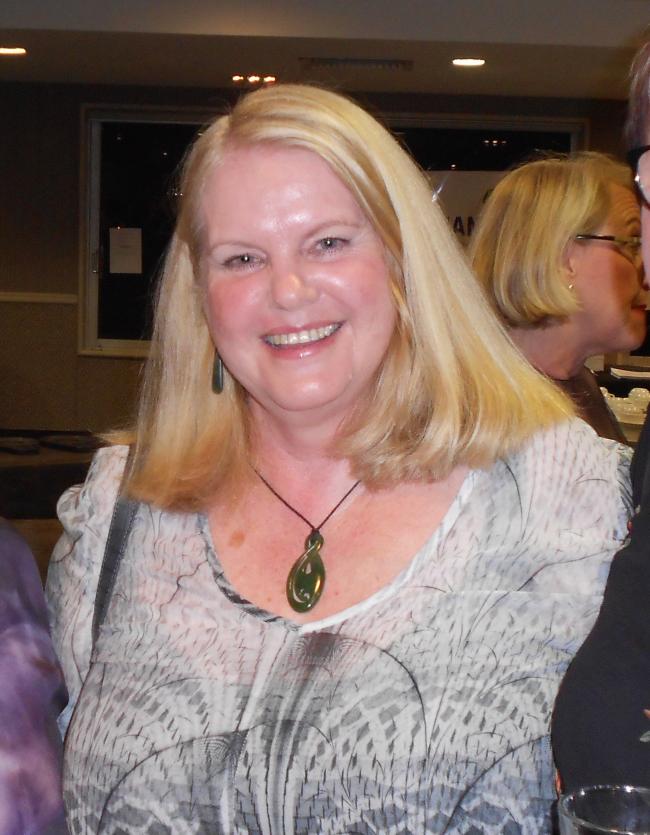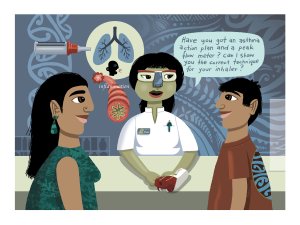Academic pharmacist Nataly Martini discusses the medical management of asthma in adults and adolescents, which has evolved to prioritise early anti-inflammatory treatment. She also explains how to improve patient outcomes by proactively identifying poor asthma control and supporting equitable access to education and treatment
Indigenising your space: Why it’s ‘crucial’ and where to begin
Indigenising your space: Why it’s ‘crucial’ and where to begin
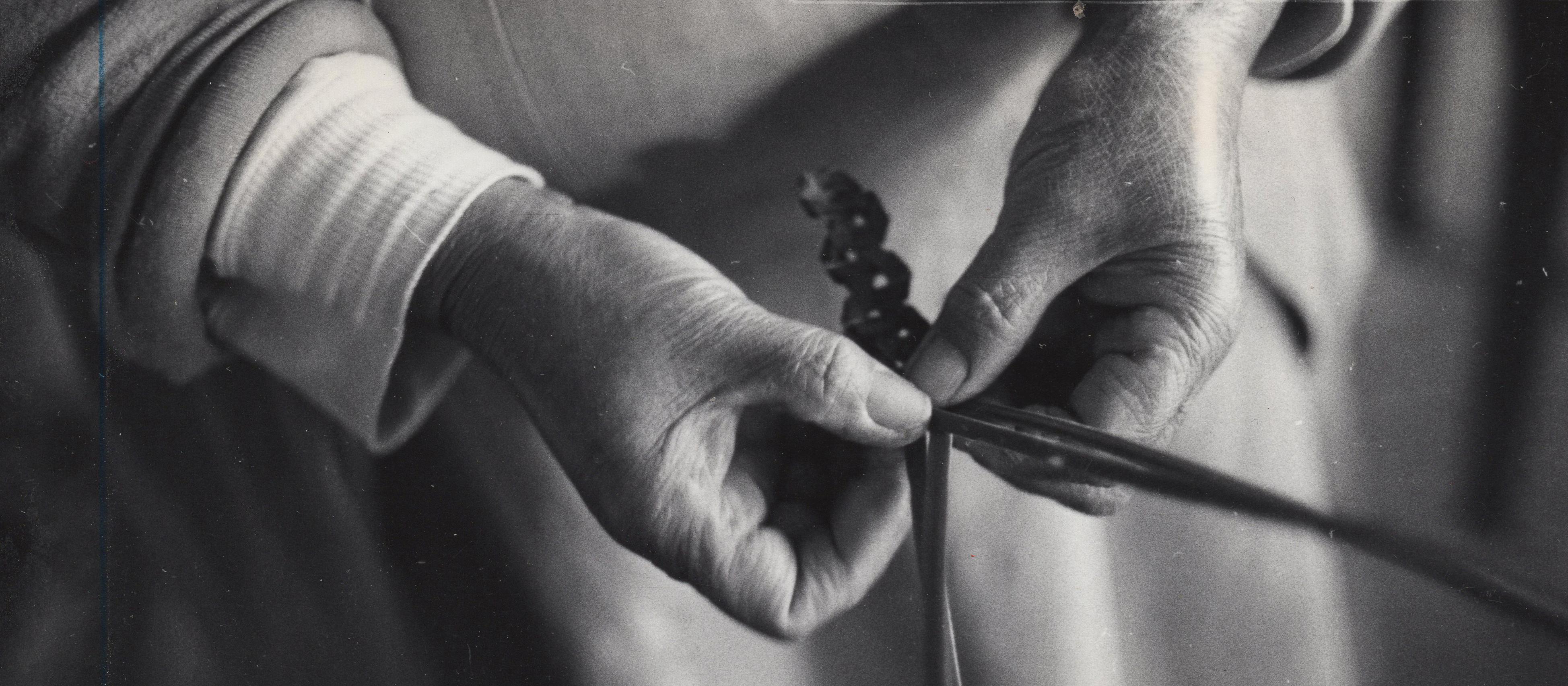
We are on our summer break and the editorial office is closed until 17 January. In the meantime, please enjoy our Summer Hiatus series, an eclectic mix from our news and clinical archives and articles from The Conversation throughout the year. Back in October 2020, we ran a Popcorn Panel where the idea of "indigenising your space" was raised. This prompted reporter Anna Lee to find out more, for an article that ran in March this year
Diana Kopua (Ngāti Porou) developed Mahi a Atua in 1996, a programme which encourages institutions to reinstate mātauranga Māori and develop indigenous strategic frameworks to improve outcomes using Māori creation stories.
It is important for not only pharmacy but all of Aotearoa to create culturally safe spaces, explains Dr Kopua, as the current failures occur through lack of acknowledgement and regard for indigenous knowledge, values and language.
According to the Pharmacy Council’s standards and guidelines, all community pharmacists have a contractual responsibility to honour the Treaty of Waitangi and address inequity, and the profession is “expected to have a working knowledge of the historical, spiritual and social factors that influence health and wellbeing of Māori”.
The Integrated Community Pharmacy Services Agreement also states a provider must contribute to the reduction in Māori health inequalities and promote equitable outcomes, support the introduction of appropriate Māori principles/tikanga within its organisation, recognise the cultural values and beliefs that influence the effectiveness of services for Māori, and more.
An indigenised space that is full of stuff and health professionals who aren’t culturally safe is cultural appropriation
In Pharmacy Today’s webinar on cultural safety in October, Ngā Kaitiaki o te Puna Rongoā – the Māori Pharmacists’ Association president Kevin Pewhairangi pointed to Dr Kopua’s work and the positive impact of an indigenised space, explaining it is a way pharmacy can remove barriers and create a safe haven.
Dr Kopua says “[Pharmacies] can seem clinical, unfriendly and uninviting…they [patients] could find the clinical experience daunting”.
“This could affect their willingness to access pharmacies and ultimately obtaining and administrating their medicines. It is important that relationships are prioritised and that connections are made in a humanistic way."
The various elements a pharmacy could incorporate to create a more culturally safe environment, she says, include displaying Māori art, carvings and weaving, displaying the biographies of Māori staff, or stocking and selling merchandise that have been created and sold by Māori.
Incorporating audio is another way, by playing taonga puoro (traditional Māori musical instruments) soundtracks, waiata Māori or having a Māori radio station playing in the background.
“We also believe in promoting a culture of feedback,” explains Dr Kopua.
“Sometimes there are small inuendoes that may not appear important to practitioners that impede the relationship with whānau. Asking for feedback about whether whānau felt respected in the consultation is necessary, to measure whether pharmacies are working in helpful ways.
“For example, the use of te reo Māori – being open to feedback and the willingness to receive feedback on pronunciation and all things Māori.”
Similarly, Mr Pewhairangi (Ngāti Porou) says embracing negative feedback is essential.
“It’s not all fairies and roses, for growth to happen you’ve got to seek negative feedback so that you can get better and for us, it’s a process that we constantly do. It’s a life choice this cultural safety – it is having that respect for other people.”
Mr Pewhairangi and his wife, pharmacist and Pacific Pharmacists’ Association president Kasey Brown, opened Horouta Pharmacy in Kaiti, Gisborne, in 2019.
From the outset, they wanted to create their pharmacy – named after the waka that brought Mr Pewhairangi’s Ngāti Porou ancestors to the region long ago – in an “authentic” way and on their terms.
“It’s about creating that inviting and safe environment for people to come into where they can feel at home. It takes away barriers and creates that safe haven. But at the same time, it’s about maintaining professionality,” he says.
“We didn’t really want to look like the big stores. In saying that, we still want to be able to provide those products but not have the excess…having our own local flair is a big thing.”
In addition to the usual retail products, Horouta Pharmacy also stocks indigenous products such as children’s building blocks in te reo Māori, flax pōtae and kete, as well as goods crafted by local Māori.
“For us is it’s about choosing the right products that fit what we’re about. Promoting locals is a link to people around here too, because they can relate to who that person is or where it comes from.”
Mr Pewhairangi also emphasises that making a real effort with te reo Māori and pronouncing names correctly in order to foster genuine connections with patients makes a considerable difference. As part of ensuring Horouta Pharmacy staff continue to learn and grow in this area, he pays for them to attend te reo night classes.
It’s a cringe moment when you hear someone’s name get murdered
Mr Pewhairangi says, “For us it’s about being able to pronounce names right, kōrero Māori, and just about offering a learning platform for our staff that will hopefully reflect in the work that they offer, and it does,” he says.
“Otherwise, you just feel like a number. It’s a barrier, regardless of what your culture or ethnicity is. It’s a cringe moment when you hear someone’s name get murdered and that’s a flaw in the process. It’s a ball-and-chain thing we inherited from the early 1900s and it’s about letting that go and evolving.
“Once you give one culture or one ethnic group a go, and you’re able to cross that barrier and have confidence to learn how to pronounce things, it’s easily transferable to other cultures.”
But what you don’t want when indigenising your space, he stresses, is cultural appropriation.
“Seeking advice from local iwi or kaumātua is the first step, but at the same time, it has got to be genuine.”
“If you’re going to do it, you have to be genuine about the intentions – it’s not something to make more sales.”
Mary Roberts, a former Ngāruawāhia pharmacy owner who has worked in the Waikato town for the past 35 years, agrees, adding that indigenising your pharmacy space has to be done with great care. “An indigenised space that is full of stuff and health professionals who aren’t culturally safe is cultural appropriation or tokenism,” she explains.
“You can’t indigenise a space or have a culturally safe space without involvement of your hapū and iwi and your whānau. As a Pākehā person, it can’t be one sided.”
When creating her pharmacy, Mrs Roberts worked with local hapū and iwi throughout the process and had “lots of discussions” about what would be appropriate.
“It wasn’t a quick process. And it’s not about loading the responsibility onto Māori staff members either, which some people tend to want to do. It’s about finding the right person within the rohe to point you in the right direction,” she says.
“We’ve got an awful lot of trust to rebuild...Why should they trust you and Pākehā medicine? The outcomes still aren’t where they should be.”
One of their “greatest successes” she explains, was the patient counselling area, which featured giant frosted glass panels adorned with kowhaiwhai and rongoā patterns that were gifted by the local hapū.
“It’s about creating private spaces in public – banks do it quite well. You want to be able to have conversations that are private, but you don’t want them to feel like you’re talking at them. People didn’t feel trapped or like they had been dragged into an office and it created this space which had special ambience, particularly for our Māori patients. Everybody respected that space,” she says.
It’s also important to have a space that is big enough for patients to bring support people with them if they wish, she adds, noting they also opted for a circular table in the counselling area.
“There’s more equity in [a circular table], there’s more sitting alongside each other and being supported than what comes with a squarish table. It’s about thinking what’s going to make people feel safe, comfortable and equal.
“It was really amazing, patients would just walk in there and sit down. They wouldn’t come up to us and say ‘can I talk to you’ but the fact they just went in there and sat down – you knew they were waiting for you to come and talk to them. It is creating that safe space.”
Considering simple details such as the style of chair can make a big difference too, she says. Chairs need to be not too low or too soft for patients to get out of, and expansive enough to comfortably accommodate larger people.
“In a number of pharmacies, particularly the corporate models, they have the belief that you don’t have lots of seating because you want people to be up, moving and shopping the shelves so they’ll buy more.
“But if you’re an older person or you’re unwell, quite often you want to sit down comfortably. We also wanted to create an area where people can talk and connect with each other, because at the end of the day, the thing that is most health-giving is to ensure that they have connections with people and there’s no reason why that can’t happen in a pharmacy.”
Another hit at her pharmacy was the safe space created for tamariki to play in, with a selection of children’s books in te reo and jigsaw puzzles that reflected te ao Māori.
You could also incorporate te reo in your signs but be sure to check with your local hapū as the choice of what is appropriate may vary from area to area, she says.
“When we did ours there were several choices that were distinctive to our area and which, to a fluent te reo speaker, would have signalled that we had taken care and respect. Then the final choice was decided by our kaumātua.”
“Wherever possible we also tried to source patient material in te reo – there are a lot of great resources out there.”
Former Pharmaceutical Society president and pharmacist Ian McMichael has also taken steps to create a culturally safe pharmacy environment and says it is an ongoing, ever-evolving process.
“One of the major things for me, for all cultures, is asking yourself how you would like to be treated. Then you look at the way your pharmacies operate for anyone, and then treat them in the way you would like to be treated,” says the Hamilton pharmacy owner.
“If you relate well to people, if you treat them with respect, they’ll be responsive to you in the same way.”
For pharmacies that don’t have a seating area, Mr McMichael believes offering patients a comfortable place to sit down is a great place to start.



